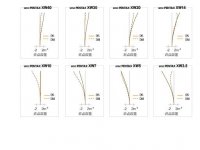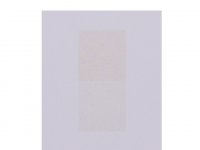Zeiss Diascope 65 and Nikon Fieldscope 82 ED
i had a chance to have both scopes out for some additional field time saturday. targets included shorebirds, terns, scissor-taileds, belted k/fisher, cooper's hawk, loggerhead shrike, among others, and the highlight of the day's outing, a discovery channel moment watching an osprey take a catfish down to the gills, perched quite cooperatively on a telephone pole! i was able to switch out (fairly) quickly between both spotters using a windowpod. incidently, the old nikon tele-pod has finally crapped out with the clamp down mechanisms loose and wobbly, but i found what i hope to be a more robust replacement from bogen. i'm trying to switch out to a complete manfrotto system so as to have the same type quick-release plates on all my equipment.
first thing i must get out of the way is a comment, only from my perspective of course, on what has been mentioned in reference to the warm, or yellowish color cast on the zeiss. well i can say for my part, under the lighting conditions this day, it was obviously apparent, and really not all that subtle. this was surprising, as i had failed to notice the tint earlier in the week. saturday the first decent cold front of the year swung thru, and skies were evenly illuminated horizon to horizon thru a uniform layer of featureless low stratus. this had the effect of erasing all shadows. perhaps the yellowish tone is more readily seen in the absence of bright light and saturated colors, and the "neutral gray" of the landscape brought out the shift.
i scope with both eyes open, and for birds in profile against the clouds, like with the osprey, it was at once clear the scene took on more of a monochrome, yellowish/green look thru the eye that was peering into the ocular, as opposed to the one looking out at the sky. the nikon, OTOH, at the eyepiece produced a view that seemed to be closer to what the unaided eye was seeing. under such circumstances, the nikon threw up an image with more contrast, especially in a bird essentially clad in greys, whites and blacks anyway. this was also the case with the shrike. however, birds like the scissor-taileds, that often show minor variations of tone along the sides, ranging from salmon to almost yellow, displayed the shading clines nicely. it seemed to me that when the eyepiece contained fair amounts of color information the tone wash became less prominent. i can see, though, where the prospect of living long term with such a tint bias might be a deal breaker for some. .
as respects detail retrieval, i remain of the opinion that the zeiss is quite a performer though; crisp and etched. naturally, the big ol Nikon, with a 30X EP at the front end, seemed to tease out slightly more, but it was close. there IS something special about the nikon view that i cant quite quantify, though, call it "easy", "relaxing" or whatever, that i dont find in (my copy) of the zeiss. one is a roof and one is a porro, but i just wont go there.... nor will i start down the path of "digital" vs "analog looking", because that probably has no real meaning at all. but the comparison did cross my mind.
i was able to assess the hyperion fixed EP 13mm and the zoom at approximately the same image scale, and while the fixed EP had just a tad more snap, it was very close. what was apparent, however, is that the fixed was brighter, with a wider field and better uniformity of whole-field focus. like as has been mentioned in connection with the zeiss variable power, i noticed at the lowest, 24mm setting, a large ring of defocused imagery, perhaps 1/2 the AFOV or thereabouts. not seriously blurry, but there. the effect mitigated some at higher settings. another curious effect, is that at stops like 16mm, for example, objects placed on one side of the fov were less defocused (clearer) than when moved to the opposing side! i neglected to check the fixed 13mm baader for the same symmetry of abberation, so cant say if this is intrinsic to the EP, scope or both.
perhaps the diascope deserves better than the baaders, but that is going to dilute the strenght of the deal, though, esp if i have to spring for zeiss' fixed power oculars.
i also havent changed my mind as repects the focus mechanism- it is one of, if not the best, i have used. ergonomics and portability is first class. lack of stray glare, donuts and crescents, and light fog are completely absent. the same can be said of the big Nikon, but i wouldn't want to tote it for any real distance.
all in all, i am going to keep the zeiss, at least for awhile. for those interested in a spotter with european pedigree, it remains, at the closeout prices offered thru some online retailers, a very good investment, if one can cop a decent copy. for those willing or having to spring for the full (albeit discounted, of course...) retail cost, i would say to try, and then look for the color bias, firsthand, and think about the kind of birding you do, and what may be the long term satisfaction quotient here.
regards,
utc





